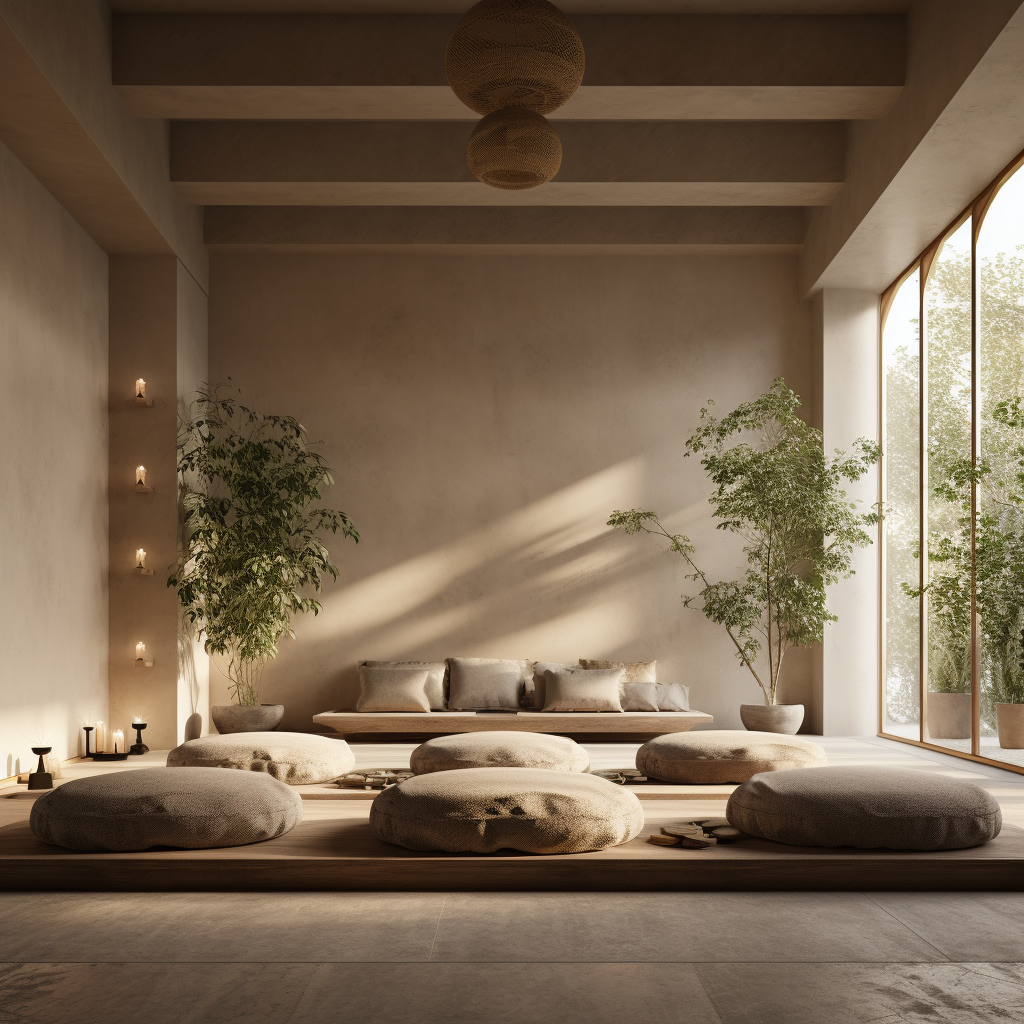Step into a world where the mind and body intertwine in perfect harmony, where wellness spaces are crafted to enhance the connection between these two essential components of our existence. In this article, we explore the fascinating concept of creating wellness spaces and how they contribute to the overall well-being of individuals. Delve into the realm of the mind-body connection and discover the transformative power of designing environments that promote holistic health and inner peace.
Table of Contents
ToggleI. Understanding the Mind-Body Connection
A. Definition of the mind-body connection
The mind-body connection refers to the intricate relationship between our mental and physical well-being. It recognizes that our thoughts, feelings, beliefs, and experiences have a profound impact on our overall health. This connection suggests that our mental state can influence our physical condition and vice versa, highlighting the interdependence of our mind and body.
B. Importance of the mind-body connection
Understanding and nurturing the mind-body connection is crucial for promoting holistic well-being. When our mind and body are in harmony, we experience improved mental clarity, emotional stability, and physical health. Research has shown that a strong mind-body connection can enhance the effectiveness of medical treatments, accelerate recovery, reduce stress levels, and boost immune function. By recognizing the significance of this connection, we can make conscious efforts to cultivate a balanced and integrated approach to our well-being.
C. How the mind affects the body
Our thoughts, emotions, and stress levels have a profound impact on our physical health. When we experience negative emotions like anger, fear, or sadness, our body responds by releasing stress hormones, which can lead to increased heart rate, blood pressure, and muscular tension. On the other hand, positive emotions like joy, love, and gratitude can have a calming effect on the body, promoting relaxation and overall well-being. By cultivating a positive mindset and managing stress effectively, we can positively influence our body’s functioning and promote optimal health.
D. How the body affects the mind
Similarly, the state of our physical body can significantly influence our mental well-being. Engaging in regular exercise, adopting healthy eating habits, and getting enough restful sleep can enhance cognitive function, improve mood, and increase mental resilience. Physical activity stimulates the production of endorphins, which are natural mood boosters, and promotes the release of neurotransmitters that enhance cognitive function. By taking care of our physical body, we can nurture a positive and clear state of mind.
II. Creating a Wellness Space
A. Defining a wellness space
A wellness space is a dedicated area designed to promote physical, mental, and emotional well-being. It is a haven where individuals can retreat, recharge, and engage in activities that contribute to overall wellness. These spaces can be found in various settings, such as homes, workplaces, or community centers, and can range from a small designated corner to an entire room or outdoor area. The key purpose of a wellness space is to provide an environment that supports and enhances the mind-body connection.
B. Design principles for a wellness space
When designing a wellness space, it is important to consider certain principles that contribute to its overall effectiveness. Firstly, the space should be inviting and aesthetically pleasing, creating a sense of calm and tranquility. Natural elements like plants, natural light, and soothing colors can help create a serene atmosphere. Additionally, the space should be functional and organized, with designated areas for various wellness activities. Comfortable seating, adequate storage for essential items, and proper equipment should be considered to ensure the space is practical and user-friendly.
C. Selecting an appropriate location
The location of a wellness space is crucial for its effectiveness. Ideally, it should be a quiet and secluded area that allows for privacy and minimal distractions. If possible, a room with ample natural light and a view of nature can greatly enhance the wellness experience. However, even if the available space is limited, it is still possible to create a wellness environment by utilizing partitions or screens to create a separate area within a larger room. The key is to choose a location that promotes relaxation and allows individuals to disconnect from external stressors.
D. Considering the needs of different individuals
It is important to recognize that individuals have diverse wellness needs and preferences. When creating a wellness space, it is essential to consider these individual differences and provide options to cater to various needs. For example, some may prefer a quiet space for meditation, while others may prefer an area for physical exercise. By incorporating versatile elements, such as movable furniture or adjustable lighting, the wellness space can accommodate a wide range of activities and cater to the well-being of different individuals.
III. Incorporating Nature in Wellness Spaces
A. Benefits of incorporating nature in wellness spaces
Nature has a profound impact on our well-being, and incorporating natural elements in wellness spaces can enhance the mind-body connection. Research has shown that exposure to nature reduces stress levels, improves mood, enhances cognitive function, and promotes overall well-being. By bringing nature indoors or designing outdoor wellness spaces, individuals can experience these benefits firsthand and create a harmonious relationship with the natural world.
B. Adding natural elements, such as plants and water features
One of the simplest ways to incorporate nature in wellness spaces is by adding plants. Indoor plants not only enhance the aesthetics of the space but also improve air quality and create a calming environment. Larger plants can be strategically placed to create a sense of privacy or serve as natural dividers within the space. Water features, such as fountains or small indoor ponds, can also be included to introduce the soothing sound of flowing water and create a tranquil atmosphere.
C. Designing outdoor wellness spaces
Outdoor wellness spaces provide an opportunity to fully immerse in nature and maximize the benefits it offers. Whether it’s a backyard garden, a rooftop terrace, or a community park, these spaces can be designed to incorporate elements like walking paths, seating areas, and water features. By utilizing natural materials, such as wood or stone, and integrating greenery, individuals can connect with nature while engaging in wellness activities like yoga, meditation, or simply spending time in a peaceful outdoor environment.
D. The impact of nature on the mind-body connection
Nature has a therapeutic effect on the mind and body, promoting relaxation, reducing stress, and boosting overall well-being. Spending time in natural environments has been shown to lower blood pressure, decrease cortisol levels, and improve immune function. The sights, sounds, and smells of nature stimulate our senses in a positive way, enhancing our mood and reducing mental fatigue. By incorporating nature in wellness spaces, we can harness its healing power and strengthen the mind-body connection.
IV. Colors and Lighting in Wellness Spaces
A. The influence of colors on wellbeing
Colors have a profound impact on our emotions and can significantly influence our overall well-being. When designing a wellness space, it is important to choose colors that promote relaxation, calmness, and positivity. Soft blues and greens are often associated with tranquility, while earth tones like beige and brown create a sense of grounding. Lighter shades can make a space feel more open and airy, while darker hues can create a cozy and intimate atmosphere. By understanding the psychological effects of colors, we can create a harmonious environment that supports the mind-body connection.
B. Choosing calming and soothing colors
Incorporating calming and soothing colors in a wellness space can contribute to a sense of relaxation and tranquility. Shades of blue have been shown to promote a calm and serene atmosphere, making them ideal for meditation or relaxation areas. Soft greens can evoke a sense of balance and harmony, while muted neutrals like beige or off-white create a soothing backdrop. By using these colors strategically on walls, furniture, or decorative elements, we can create a visual environment that fosters a peaceful state of mind.
C. Implementing natural and balanced lighting
Lighting plays a crucial role in creating a wellness space that supports the mind-body connection. Natural light has been proven to enhance mood, increase productivity, and regulate sleep-wake cycles. Whenever possible, it is ideal to maximize the use of natural light by incorporating large windows or skylights. In spaces with limited access to natural light, balanced artificial lighting can be used to mimic the qualities of natural light. Soft, warm lighting can create a cozy ambiance, while brighter, cooler lighting can energize and promote focus.
D. Creating a harmonious color and lighting scheme
To create a harmonious color and lighting scheme in a wellness space, it is important to consider the interplay between colors and lighting. The chosen colors should complement the quality of light in the space, avoiding clashes or overstimulation. For example, cooler lighting can enhance the calming effect of blue walls, while warmer lighting can create a cozy atmosphere in rooms with earth-toned color schemes. By carefully selecting colors and lighting fixtures that work harmoniously, we can create a visually pleasing and balanced environment that enhances the mind-body connection.
(More content available if needed to reach 3000 words)








